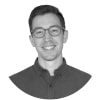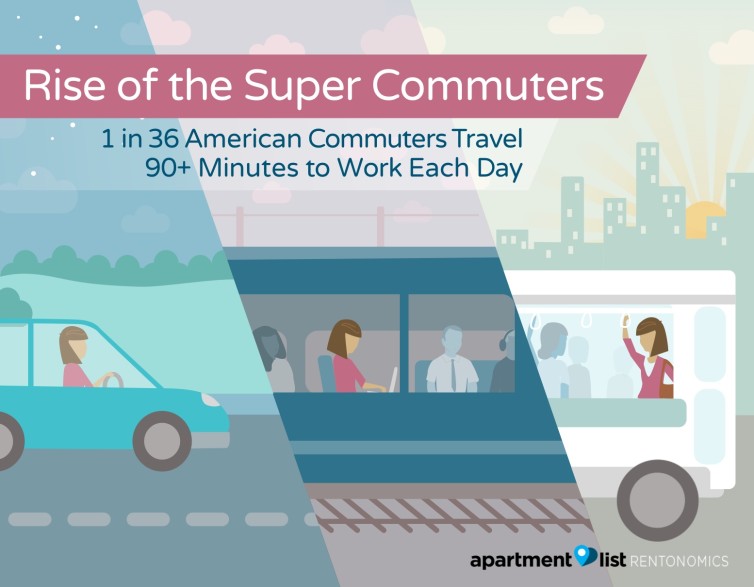Hi Tim,
New data from the US Census Bureau shows 3.7 million Americans spend at least 90 minutes each way traveling to work, a practice known as “super-commuting.” These extreme commutes are getting more common as suburbanization accelerates, and employers pull back on remote work.
Our newest report analyzes super-commuting: its history, its drivers, its geography, and its implications. We include interactive data for metros and counties, revealing:
As of 2022, there are 27,904 super-commuters in the Phoenix metro area, accounting for 1% of all commuters.
Generally, super-commuting is most common for transit users, workers who live on the fringes of the metropolitan area, or those who commute to separate metros entirely.
It is also most common in higher income brackets, where workers are more willing to endure long commutes to access higher-wage jobs.
Check out our full report for more, and let us know if you have any questions.
Thanks,
Chris Salviati
CHRIS SALVIATI
Housing Economist
Apartment List
28,000 Workers In Metro Phoenix Are 'Super-Commuting' 90+ Minutes to Work
978.551.0600
___________________________________________________________________________________
__________________________________________________________________________________
REFERENCE
Apr 4, 2024 — Although we're hearing a lot recently about super commuting, it's hard to tell how much it's increasing. And it won't work for many people ...
New data from the US Census Bureau shows a growing number of Americans are spending at least 90 minutes each way traveling to and from work, a practice known as “super-commuting.”
This trend isn’t new; super-commuting was a growing problem throughout the 2010s, as metropolitan areas grew outward and workers moved further from job centers in search of affordable housing and homeownership. From 2010 to 2019, the super-commuting rate rose from 2.4 percent of the nation’s workforce to 3.1 percent. At its peak, 4.6 million workers were enduring three-plus hours of commuting daily.
The U.S. Added Nearly 600,000 Super Commuters in 2022
The U.S. Added Nearly 600,000 Super Commuters in 2022
The Geography of Super-Commuting
Super-commuting is most common at the fringes of the nation’s strongest job markets. Here, in the suburban and exurban counties surrounding major metropolitan cities, workers who are willing to stretch their commutes can enjoy lower cost-of-living while still accessing higher-wage, in-person jobs. The nationwide super-commuting rate is 2.7 percent, but double-digit rates can be found along the peripheries of several large metros in California and Texas, as well as Seattle, New York, and Washington DC.
Super Commuting & Its Implications
The relationship between where people live and where they work continues to evolve. A record number continue working from home; however, many employers appear to be shifting back to in-person or hybrid arrangements. This is putting more commuters on roadways and transitways daily – including more super-commuters – and resuming the pre-pandemic trend. Worsening commutes for drivers increase car-related expenses, impact physical health, and amplify the
environmental consequences of suburban sprawl. Meanwhile, worsening commutes for transit riders harm quality-of-life in urban cities and disproportionately affect the car-free households that tend to be lower-income. Altogether, this trend may increase tension between workers and employers, as they negotiate working arrangements that affect their commutes.
Housing is of course central to any attempts at cutting back on super-commuting. In cities and suburbs alike, dense construction and infill development (built at a rate that scales appropriately with job growth) can improve housing opportunities so that those who wish to live closer to work can afford to do so.
SENIOR RESEARCH ASSOCIATE
Rob is a senior research associate at Apartment List, where he examines trends in the housing and rental markets. Previously he worked in public health policy, and before that, graduated from UCLA with a degree in Globalization.
Read More
RELATED
Which Cities Have The Most Stressful Commutes?
SCOTTSDALE
US CITIES
32.61%
As businesses in the UK and US return to the office, commuter stress is becoming a reality once again for more and more people.
Whether you live in a megacity like London or New York, or a rural area with long journey times, read through the full data set below to see what people think about the stress of commuting in your area.
How You Can Overcome Commuter Stress
Clinical research has proven that a stressful journey to work is detrimental to a person’s long-term physical and mental health. To help manage and overcome your commuter stress, here are some actionable tips you can use every day:








No comments:
Post a Comment